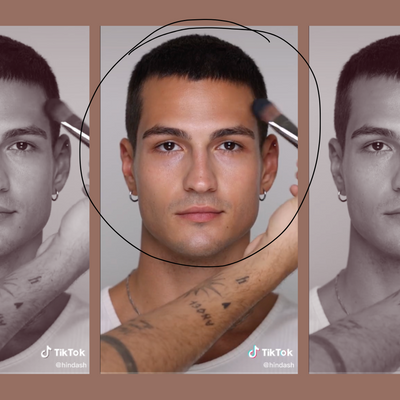Why are mass shootings still happening?
The recent shootings in Bakersfield, California demand a thoughtful and considered public response. While the facts of this tragic incident are still unfolding, we know enough now to surmise that a man named Javier Casarez was a husband and father who murdered his ex-wife, a number of other people, and then took his own life with a powerful, .50 caliber handgun.
SEE ALSO: Black masculinity and when you don’t fully belong
Men using guns to enact violence against themselves and others is not new. But we should resist the urge to refer to these shootings in any way as ‘normal.’
It is not.
The majority of mass shootings occurring in the U.S. include family members as victims.
We should also resist the impulse to lapse into helpless cynicism about the inevitability of mass shootings, repetitive media vilification of shooters, or oversimplified analysis of violence only as a manifestation of toxic masculinity. Now, more than ever in the aftermath of so much loss, our conversations about violence and masculinity have to be more nuanced, especially if we want to prevent these acts from occurring. We owe that much to the five victims: Petra Maribel Bolanos de Casarez, Eliseo Cazares, Manuel Contreras, Laura Garcia, and Antonio Valadez.
Masculinity that rigidly prescribes violence, dominance, and aggression as the only options for men … operates more like carbon monoxide than smoke– which means it is odorless, noxious, and we all unknowingly breathe it in.
The majority of mass shootings occurring in the U.S. include family members as victims. That is, family violence and mass violence are two expressions of an underlying motivation to gain control and power, often following a perceived threat or insult. With rare exception, violence becomes an option when other power-restoration options fail or are imperceptible. Javier Casarez’s motivations may never be fully known and making vapid deductions about his mental health without a formal clinical assessment and this knowledge will prove useless. However, science offers some insights about the psychology of murder-suicides and the connection to masculinity that seem important to lift up.
First, murder-suicides are purportedly fueled by a loss of manhood and a strong moral obligation and sense of entitlement to recoup it. Second, at the root, murder-suicides are believed to be connected to marginalization and hopelessness. Third, these acts of violence are likely to occur when men experience or perceive deep humiliation or threat.
It is the sense of entitlement to the use of force and violence that is the most troubling because it permeates society in such insidious ways. Masculinity that rigidly prescribes violence, dominance, and aggression as the only options for men facing perceived insults can be toxic but it operates more like carbon monoxide than smoke– which means it is odorless, noxious, and we all unknowingly breathe it in. And, it affects how we think about and respond to men’s violence and what we teach our boys about resolving conflicts and facing loss of control.
Some may read this article as an attempt to sanitize the shooter and so many other men who resort to violence. Nothing Javier Casarez did on September 12, 2018 should inspire more empathy for him than he demonstrated for his victims, and absolution is the work of spiritual leaders. The intention is to signal a call to us to look further and more carefully at the ecology of these individual acts of violence and the contexts in which they occur.
This is a point affirmed in the American Psychological Association’s new report on the health of racial/ethnic and sexual minority boys and men. The context is one of growing intolerance and violence perpetrated against Black and Brown communities. All are examples of clear and present conditions or pollutants that reinforce the ‘normalcy’ of violence. As more of the story unfolds, we must resist the urge to draw blind conclusions that lead us to the all-too-familiar discourse about the inherently toxic nature of men, or especially of immigrant, Hispanic and Latino men in particular.
The hopeful news is that there are boys and men reimagining masculinity and pushing back on norms that encourage them to be strong, stoic, and violent.
Mass shooting events, perpetrated almost exclusively by men (who are mostly white) beg more clarifying questions like: “how can we as a society move to create healthy opportunities for boys and men to restore a sense of integrity in the face of perceived threats to their masculinity?”; “how can we all reimagine masculinity in ways that calls forth the most positive and redemptive enactments?”; “how do we facilitate different pathways of emotional expression for boys and men who find themselves rage-filled and armed with a high caliber weapon?” All of us have a role to play in envisioning creative responses to these questions.
The hopeful news is that there are boys and men reimagining masculinity and pushing back on norms that encourage them to be strong, stoic, and violent. A few initiatives appear especially promising for preventing or reducing violence and adherence to harmful, unhealthy versions of masculinity among diverse boys and men. For example, programs like Coaching Boys to Men, Promundo’s Manhood 2.0, the ManKind Project, and the Council for Boys and Young Men. In addition to supporting such local community-based programs, each of us are faced everyday with opportunities to disrupt the single stories we tell boys and men about masculinity.
What we can do right now to prevent male violence is support diverse boys in our nation in reimagining positive masculinity as they move through developmental transitions towards adulthood.
We can also help them navigate toxic ecologies filled with racial bias, economic inequality, institutional and neighborhood violence to pursue mindful connections with women and girls, as well as other boys, that are rooted in kindness and mutual respect.
As these acts of violence continue to occur, how we respond to Bakersfield and other similar shootings demonstrates a lot more about who we are as a society than they do about the particular boys and men who resort to desperate means for restoring failed manhood. What would be an ultimate failing on our part would be to continuing having conversations about male violence that convince a generation of boys and men that they are irreparably toxic.
Wizdom Powell, Ph.D., M.P.H. is a leading national expert on masculinity and men’s health. She is associate professor of Psychiatry and Director of the Health Disparities Institute at the University of Connecticut Health. She is also the 2019 President-elect of the Society for the Psychological Study of Men and Masculinities and current Chair of the American Psychological Association’s Working Group on Health Disparities in Boys and Men. Contact Dr. Powell at wizdom@drwizdompowell.com.
Eric Mankowski, Ph.D. is a community psychologist and professor in the Department of Psychology at Portland State University. His program of action research is aimed both at understanding how masculinity is socially constructed and addressing its connection to violence and other health and social problems. He serves on the American Psychological Association Working Group on Health Disparities in Boys and Men, and Expert Panel on Gun Violence Prediction and Prevention, as well as co-chairs the Oregon Batterer Intervention Program Advisory Committee. Contact Dr. Mankowski at mankowskie@pdx.edu.






